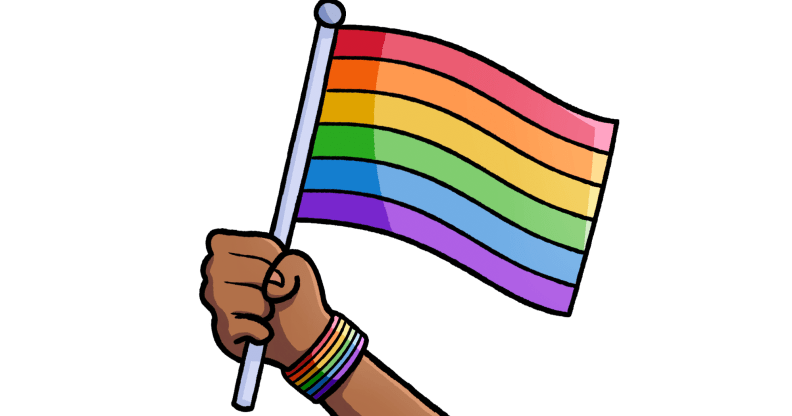Are we seeing the end of the ‘traditional family’?

64% of UK adults don’t believe there is one definition of a ‘traditional family’
With Australia’s equal marriage debate being taken to public vote this week, it may be only a matter of time before it joins the majority of Western nations in legalising same-sex marriage.
But as LGBT people fight for their marriage rights across the world, overall marriage rates have been on the decline for decades.
As LGBT people push for adoption rights, and equal access to reproductive services, data shows that in 2016 the USA had the lowest birth rate since the US Centers for Disease Control and Prevention started collecting data, and almost 40% of babies were born to unmarried mothers.
Could it be that Generation X may be the last to have the image of a husband and wife, married with children, as their idea of a “traditional family.” Or is the concept as lasting as ever, just manifesting itself in more subtle ways?
In Britain, 40% of UK adults are married, and 60% of those married are a parent or guardian. Married with children is still the most common family structure.
However, a survey of over 2,000 UK adults from insurance company LV= found that 64% agreed that there was not only one definition of a “traditional family,” more than four times the amount who believed the opposite.
This varied by region of the UK, with the highest (71%) being in London, but in no region did it go below 55%.
Over half of those surveyed thought that you didn’t need to have children to be defined as a traditional family.
Related: The 11 LGBT-inclusive children’s books every parent needs to buy
LV= also interviewed a number of families who may not be considered “traditional.”
Iain and David have been together for 23 years, and married for 10, and live with their adopted sons, Christopher and Anthony, who are brothers by birth.

Iain says things have moved on a lot for non-traditional families, compared to discrimination he faced 30 years ago.
“When I applied for my first mortgage with my previous partner in the late 1980s, we weren’t allowed to have an endowment mortgage because we were a gay couple. There were concerns about AIDS at the time and we were asked to have an HIV test.”
“The insurance provider then quoted an enormous premiums figure, even though we had a very low joint income.”
But despite progress, does this kind of discrimination still exist? Iain says “yes, absolutely.”
Moreover, he says that while legislation has advanced, that doesn’t mean culture has moved with it – that he sees homophobia in the way newspapers are full of debates about whether gay couples should be allowed to marry, have children and adopt.
“That isn’t there for heterosexual couples, but it’s constantly in the background for us. I think the media has an underlying message of, ‘it’s not the norm.’”
He finds at work and socially, where most of the people they know are part of “traditional” family units, people often expect him and David to fall into the prescribed gender roles of ‘mum’ and ‘dad.’
With Iain being the higher earner, many assume David is the primary caregiver, and Iain struggles to negotiate flexibility at work in order to take care of his children.
“We’re not ‘traditional’ dads, so you can’t split the role of ‘mum’ and say that’s David and the role of ‘dad’ and say that’s me – we both do an amalgamation of both roles’.
Related: This lesbian couple both just had babies…and the sperm donors are husbands
As an adopted child himself, Iain always considered adoption an option, and in some ways think being gay helps him be a better father to his sons.
“Growing up gay, I think we are challenged more, with different difficulties and different scenarios that perhaps straight people aren’t. In some ways, my own experiences make it easier to flex to children who perhaps don’t come from a very stable background.”
Although the fight for equality in family legislation is vital, it’s also important that societal norms shift too.
For Sarah and Laura, who have been together for nine years, visibility is crucial.
“Society is increasingly inclusive as more individuals are finding the courage to be themselves openly. It has led to an increasing presence of families like us in daily life and in the media.”
“The progress is slow but it’s heading in the right direction, and we believe that just by being ourselves openly and visibly to the world around us, we are helping those around us form positive and more accepting opinions of families different to their own.”
The popularity of shows such as Modern Family and Transparent, prove that people are hungry to see the diversity of families in real life reflected on TV, and as television critic Maureen Ryan told CNN, media is changing to reflect that.
“The families on the shows aren’t as idealistic, but they remain relatable,” Ryan said. “The most successful shows, comedies especially, have families that you can look at and see parts of your family in them.”
So perhaps it’s not about the end of the idea of the “traditional family,” so much as the widening of that definition, to include the infinite number of possible combinations.
“We think the term ‘family’ is ever evolving – there is no one definition of ‘family,’” Sarah and Laura said.
“A woman and man, two women, two men, one man or one woman, kids or no kids – all are families and many family types have existed throughout history, so, really, all could be seen as traditional!”

